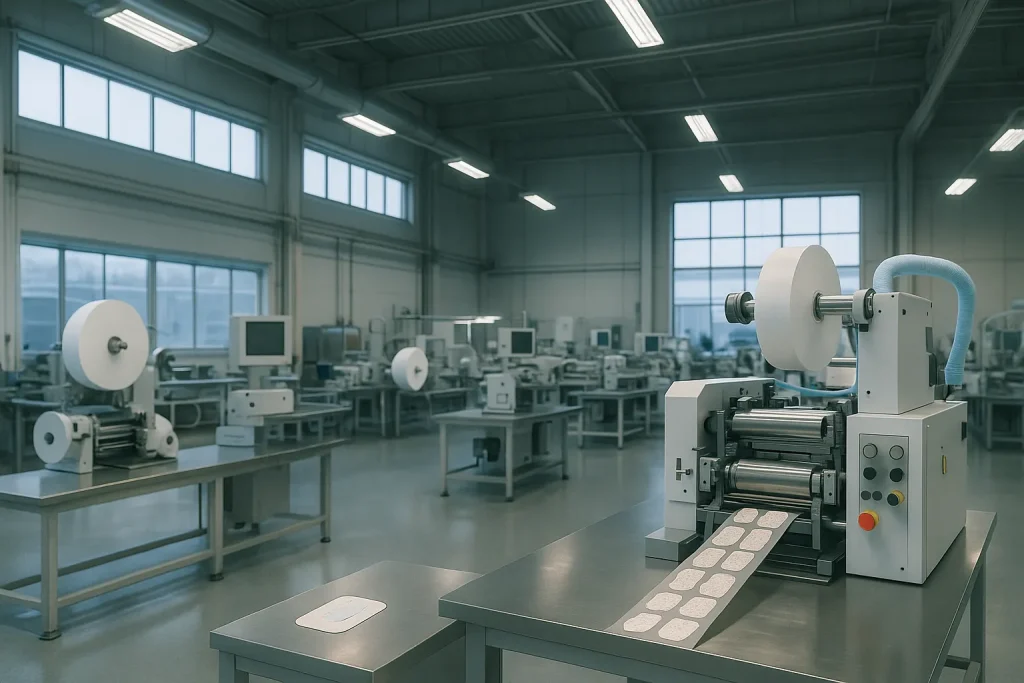
The medical device industry is rapidly transforming in an era where precision, safety, and speed are paramount. Central to this transformation is rotary die technology, a manufacturing process redefining how medical components are fabricated with consistency, accuracy, and scalability.
What Is Rotary Die Cutting in Medical Manufacturing?
Rotary die cutting is a process in which a cylindrical die is used to cut, perforate, crease, or shape flexible materials into precise medical components. It’s a go-to solution for manufacturing adhesive patches, wound care products, surgical drapes, wearable sensors, diagnostic strips, and other disposable medical items. This technique’s efficiency and repeatability are essential in high-volume, high-stakes environments.
Key Trends Shaping the Future of Medical Device Fabrication
Miniaturization & Micro-Precision
Modern medical devices are becoming smaller and more complex. From micro-needles to wearable biosensors, there’s a growing demand for ultra-precise die-cutting that can handle thin films, foils, adhesives, and layered materials without compromising structural integrity.
Sakazaki’s advanced die systems are engineered to deliver micron-level accuracy—which is critical for today’s intricate medical designs.
Integration with Cleanroom Standards
Manufacturers are increasingly integrating rotary die systems into cleanroom environments. This ensures product hygiene and compliance with regulatory norms such as ISO 13485 and FDA guidelines.
Automation and Smart Manufacturing
Industry 4.0 is making its way into medical fabrication. Automated rotary die-cutting machines are now paired with vision systems, sensors, and AI-driven quality control for real-time adjustments and zero-defect production.
With custom automation-ready die solutions, Sakazaki supports smart factories and lean manufacturing for medical OEMs and suppliers.
Sustainable & Biocompatible Material Processing
As medical manufacturing shifts toward sustainable practices, rotary die systems must accommodate biodegradable, recyclable, and biocompatible materials like hydrocolloids and biofilms.
Rapid Prototyping and Customization
Speed to market is crucial. Manufacturers demand faster prototyping cycles with the flexibility to customize dies for evolving medical designs.
At Sakazaki, precision-engineered dies are supported by expert reverse engineering and prototyping services, drastically reducing development timelines.
Why Sakazaki Leads in Rotary Die Innovation for Medical Fabrication?
As a solid rotary die technology pioneer, Sakazaki stands out for its relentless focus on quality, innovation, and client collaboration. With over a decade of experience in high-performance die design, Sakazaki supports medical, pharmaceutical, and hygiene manufacturers with:
- Custom-engineered solid rotary dies for complex medical geometries
- Die refurbishment, rebuilding, and reverse engineering services
- Design consulting for precision fabrication and material compatibility
- Global-standard manufacturing practices ensuring quality, reliability, and compliance
Whether you’re producing diagnostic consumables or advanced wound care solutions, Sakazaki empowers your production line to achieve unmatched precision, efficiency, and scalability.
Final Thoughts
The future of medical device fabrication is intricately tied to the capabilities of rotary die technology. As materials evolve, designs become complex, and regulations grow stricter, manufacturers must partner with trusted leaders in die engineering.
Sakazaki doesn’t just supply dies—it delivers precision, performance, and partnership for tomorrow’s medical innovations.
Ready to bring your product design to life with precision tooling? Contact Sakazaki today for custom rotary die solutions that reduce lead time and boost performance.